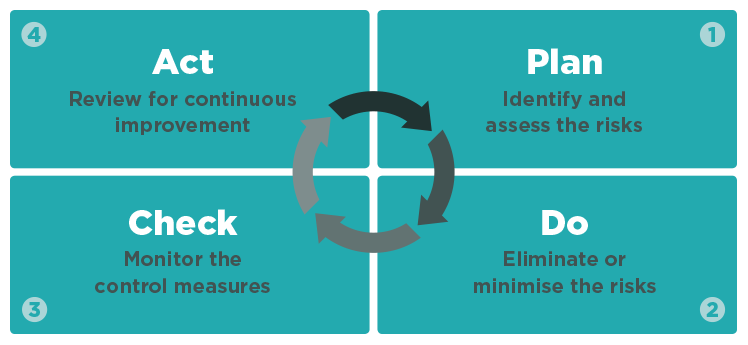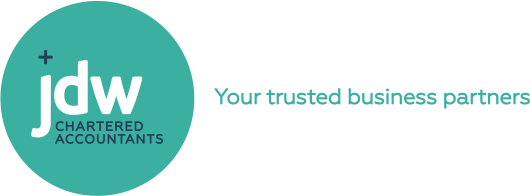Workplace Health and Safety Policy Covid-19
How to Develop a Workplace Health & Safety Policy for Covid-19
When you take on employees and contractors, you have a primary responsibility for people's health and safety at work, under the Health and Safety at Work Act 2015. This means you have to manage risk as far as it is practicable, and balance it with the time and cost needed to manage it. Pretty tough to do this at the best of times, let alone during a pandemic.
Here is how we went about developing our health and safety policy around Covid-19 during the Delta outbreak as the Protection Framework was about to be introduced. We have also outlined some basic considerations for how you can develop your own policy.
Steps for developing your own health and safety policy:
- Identify and Assess the Risks – Identify the hazard and impact on your workforce
- Consider what Conditions and Behaviours contribute to the Risks
- Consult with the team, Communicate and provide Training
- Review regularly

Identify and Assess the Risks
Every workplace will have its own assessment of risks. Consider the impact and likelihood of injury on your workforce.
We considered the risk of Covid-19 Delta on our workforce. The Delta variant is more infectious than previous variants, and there has been a community outbreak in Auckland since August 2021. Some of our team members have compromised immunity despite vaccination, and many of our families include children under 12 who cannot be vaccinated or others with compromised immunities or other vulnerabilities. Therefore we considered the risks to be high: a community outbreak makes infection more likely and the potential impact on our workforce would be severe.
Conditions and Behaviours
Does the working environment contribute to the risks? Does the way we operate contribute to the risks?
Our office is well-ventilated, and each person sits at a partitioned desk or in a separate office, and uses their own equipment. We have common areas which bring people in closer proximity, in the stairwell, meeting rooms, washrooms, printer areas and lunchrooms. We identified that we had to pay more attention to those common areas.
When Auckland was at Alert Level 1, we would often have clients or prospects walk in without an appointment. This posed greater risk for our receptionist, managers and directors. Our auditors and senior team would also have meetings offsite at client premises or in cafes. Face-to-face meetings put our workers more at risk than phone or video calls.
We adopted public health measures like good hygiene practices, mask wearing, social distancing. When we moved to Alert Level 4, we encouraged workers to work from home where practical, and locked the office door against public access, to protect our workers who did have to work at the office. We shifted all our work meetings to Zoom, Teams or phone. We offered twice weekly Zoom check-ins for maintaining connection and mutual support. We agreed to flexible or reduced work hours to help working parents who needed to care for their children.
Now we are moving from Level 3.2 to the new Protection Framework "the traffic light system", we are taking a cautious approach. Our workers are still largely working from home. Everyone who enters the office must use the Covid tracer app or sign the register.
Eliminate or Control
Depending on the hazard, you can either eliminate the risk, or control the risk to a manageable level.
When there is a community outbreak, we can't eliminate the risk of catching Covid-19 entirely, so we try to manage the risks. We read the information provided by the Government's Covid19 website and the Ministry of Health's website too. You can refer to industry guidance if available from your industry organisation. For instance, the Restaurant Association has guidance and checklists for opening food outlets under different operation conditions imposed by the different Alert Levels.
In addition to the measures we already had in place, we decided that we needed a high vaccination rate in our team and to limit exposure to unvaccinated people in our office. Other than face masks, we didn't think that full PPE was required for our workers. We will be requiring visitors to be eligible for the vaccination pass or else we will make alternative outdoor arrangements. We are investigating whether a screen can be installed at reception to further protect our workers.
Can you force workers to get vaccinated?
We encouraged all our workers to get vaccinated, and were delighted to discover that our team was 100% fully vaccinated.
Some industries are mandated for vaccination – border and MIQ, health and disability, prison and education sectors for instance. If your organisation is not mandated for vaccination, you need to make a risk assessment to decide whether a vaccination is required for different types of work. If the nature of work puts them at a higher risk of infection and transmission than outside of work, then that work should probably be done by a vaccinated employee. Consider how many people they are in contact with, how easy to identify contacts, proximity to others, length of time in close proximity, regular interaction with people at higher risk of serious illness, and regular interaction with unknown people.
You cannot force employees to disclose their vaccination status, but you have the right to treat them as if they were not vaccinated for health and safety risk management. If certain work can only be done by vaccinated workers, businesses should set a reasonable timeframe for workers to decide if they will be vaccinated. If an employee cannot work during this time, special paid leave should be considered, especially in the short term while employers and employees discuss what happens next. Employers and employees still need to deal with each other in good faith and consider reasonable alternatives if their current role requires vaccination.
Businesses can only ask candidates at job interviews if they are vaccinated if this is justified by the requirements of the role. The information needs to be collected and handled according to the Privacy Act.
Consult, Communicate and Train
A health and safety policy is only workable if it widely adopted by the workers themselves. It is critically important for the workers to be consulted in developing the policy as they will understand the practicalities of implementing the policy better than management.
We circulated and discussed a draft policy with the team over a few meetings, and they came up with suggestions of their own. The team expressed a desire to have more precautions than what was originally proposed, and these were adopted in the final policy. We used both written and verbal communication and gave opportunities for questions. We gave workers access to a variety of posters and guides about the public health measures, and demonstrated tools such as the Covid Tracer app.
We repeatedly reminded people about personal hygiene, regular surface cleaning, mask wearing, safety when travelling to work. If you have workers who are not as fluent in English, then you may need to make extra effort to provide them with adequate training and resources for understanding.
Review Regularly
After the policies have been implemented, it is important to review them regularly. The risk itself, the working environment and ways we do work may all change, so we may have to adapt our policy to suit.
We had Covid-19 policies we implemented in March 2020 during the first lockdown. Since then, the Delta strain has increased the risk for our workers. The Government has finessed its Alert Levels and is moving towards a traffic light system with vaccination passes. We reviewed our policies and improved upon them as a result of the review and consultation. We will review them again early in the New Year. It is probable that we will be revisiting and re-writing our Covid-19 health and safety policy for many months to come.
Covid-19 is a workplace health and safety risk that needs to be carefully managed. Collaborate with your workers to identify and assess the risks, create conditions and behaviours to manage the hazards, adopt the plans and regularly review policies to keep your workers safe. There are plenty of resources to help you.
Resources for Employers
- Serena Irving
Download a PDF version here
or contact the author by email. Like our Facebook page
for regular tips.
Serena Irving is a director in JDW Chartered Accountants Limited, Ellerslie, Auckland. JDW is a professional team of qualified accountants, auditors, business consultants, tax advisors, trust and business valuation specialists.
A well-written article like this, which is general in nature, is no substitute for specific employment or health and safety advice. If you want more information about the issues in this article, please contact your HR adviser or the author.




